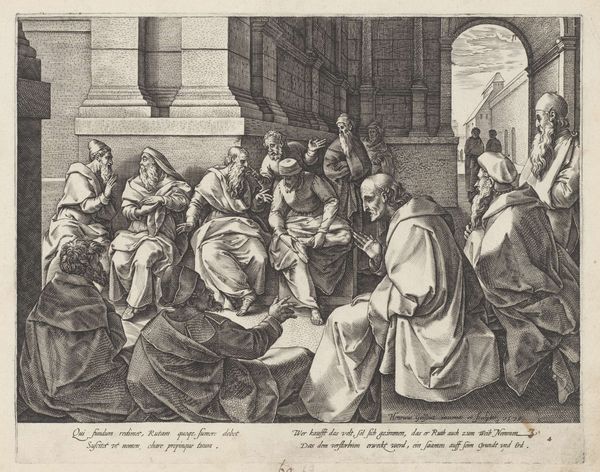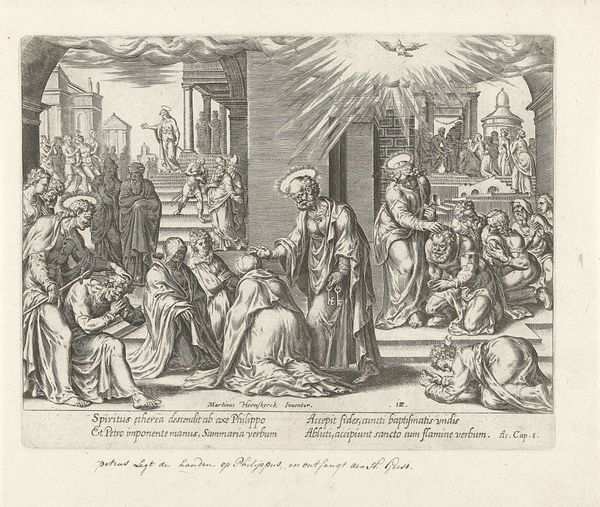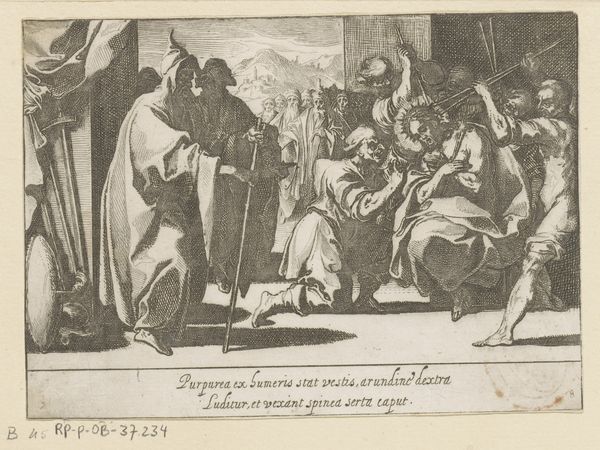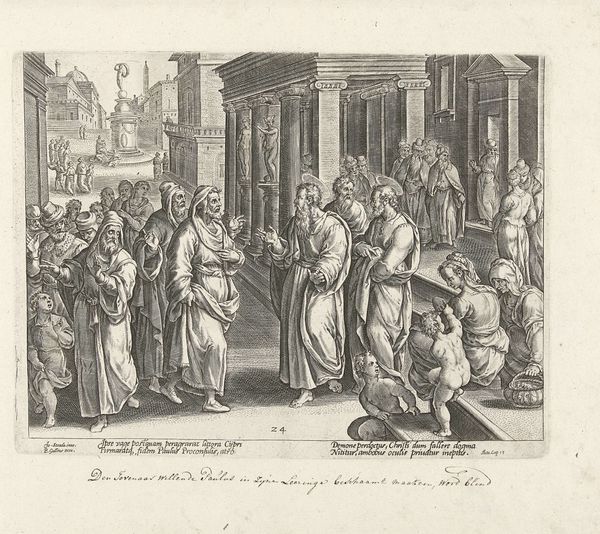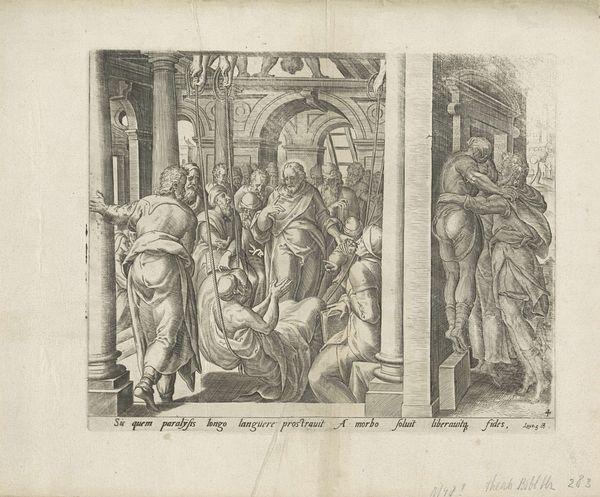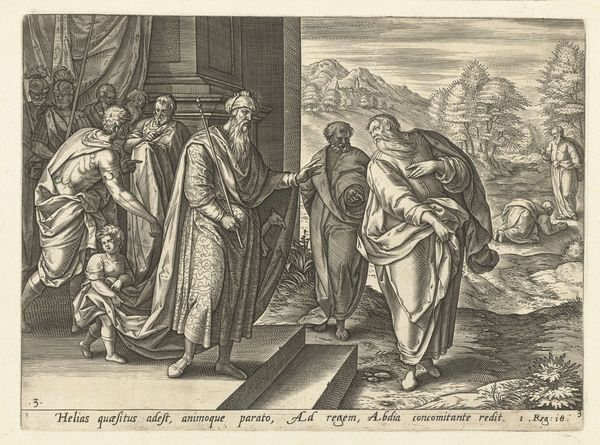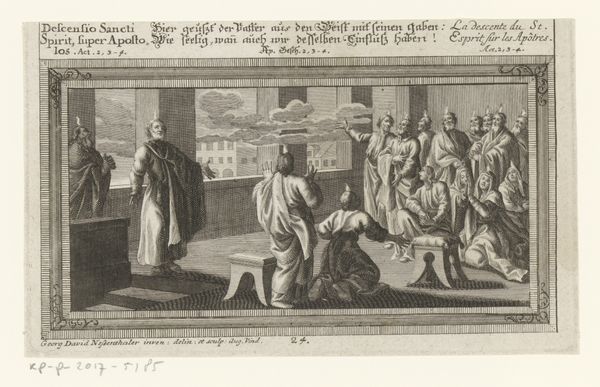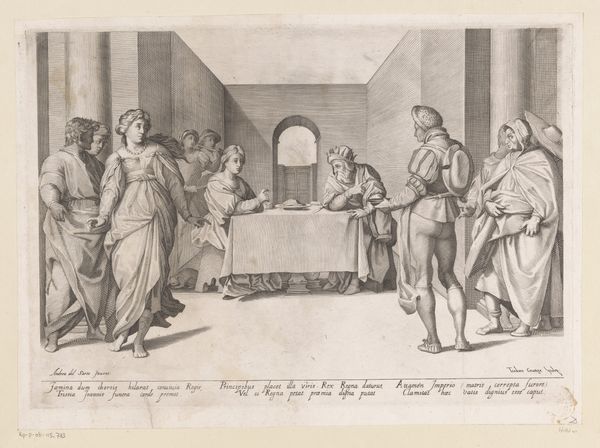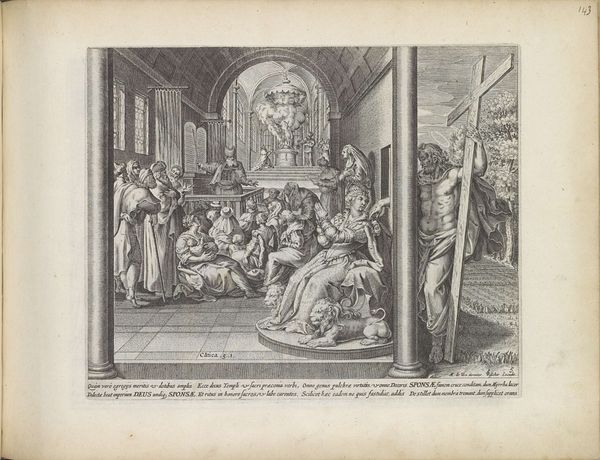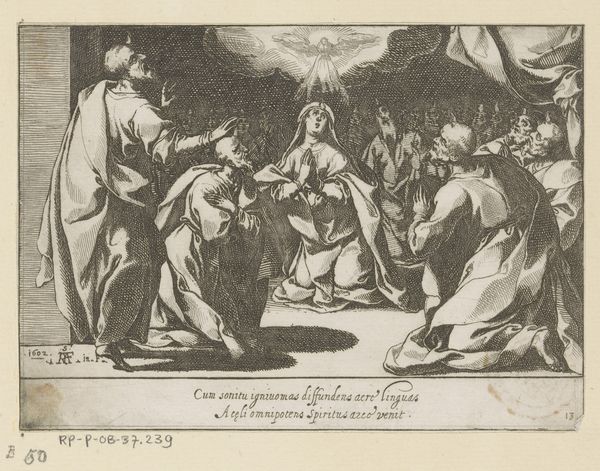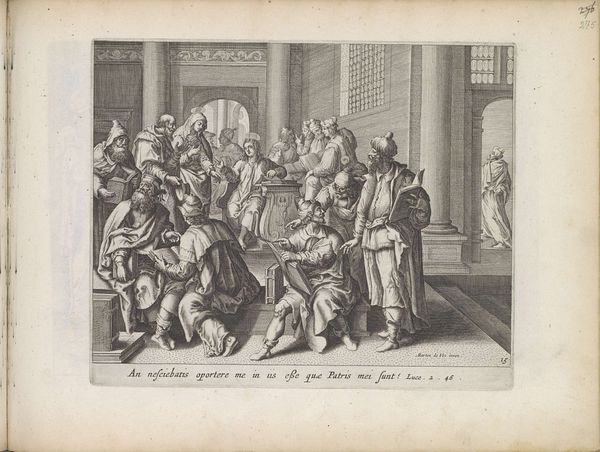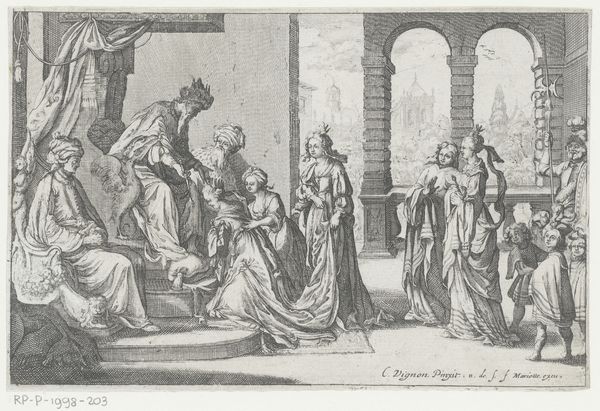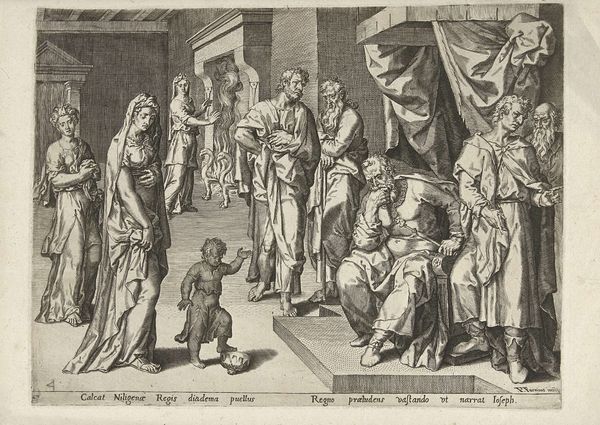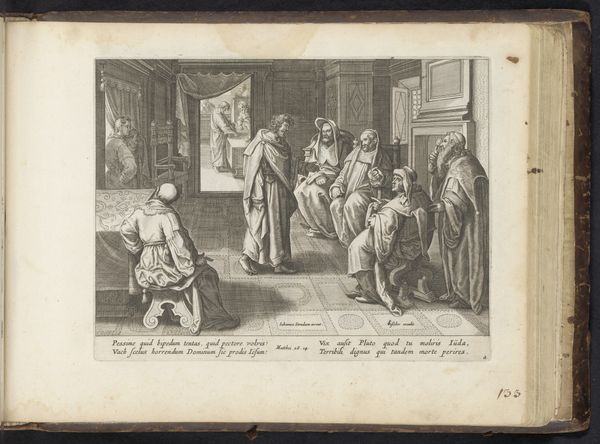
Christus tussen de schriftgeleerden in de tempel 1602 - 1604
0:00
0:00
raffaelloschiaminossi
Rijksmuseum
print, engraving
#
baroque
# print
#
figuration
#
history-painting
#
engraving
Dimensions: height 111 mm, width 155 mm
Copyright: Rijks Museum: Open Domain
Editor: We're looking at "Christus tussen de schriftgeleerden in de tempel," a print by Raffaello Schiaminossi from around 1602-1604. It's housed at the Rijksmuseum. The detail is really striking, but there’s something a little unsettling about all these serious faces. What stands out to you about this work? Curator: The power dynamics on display are what grab me. Here, we see a young Christ, positioned as an intellectual and spiritual disruptor in the temple, engaging with established religious authority. Consider how the artist portrays the power structures of the time, the young challenging the old. How might we read Christ's presence as a critique of entrenched power? Editor: It's interesting you mention power. I see the scholars looking almost wary, a bit put out by this young person challenging them on their own turf. Curator: Precisely. It raises questions about knowledge itself: who gets to define it, who is excluded from its interpretation, and how dominant narratives are challenged. We must consider this engraving in its historical context of religious and intellectual reform, asking if it implicitly advocates for alternative interpretations of scripture. What sociopolitical undercurrents do you perceive that could be informing Schiaminossi’s rendition of this Biblical scene? Editor: Well, maybe it's about the need to question authority, especially when it seems unyielding. And the youthful, almost vulnerable figure of Christ adds another layer; it challenges the notion that wisdom comes only with age and status. Curator: Indeed. And note the positioning and gazes— who holds direct eye contact and who averts. It's about more than a simple debate. Consider, also, the potential gendered reading, considering that theological scholarship at the time was predominantly male-dominated, although not universally so. Does Christ's youth and possible androgyny add an intersectional aspect? Editor: I never thought about it that way! I was mostly focused on the immediate scene, but understanding the broader societal influences gives the artwork so much more depth. Curator: Exactly! The real art lives in its ability to spark these conversations across time.
Comments
No comments
Be the first to comment and join the conversation on the ultimate creative platform.
